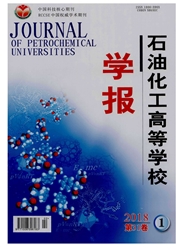

 中文摘要:
中文摘要:
目前阿赛线进站温度远高于凝点,且清管频繁。清管通球作业中蜡多,堵塞加热炉进口,过高的进站油温也使得加热炉过烧。利用普适性蜡沉积模型,预测了阿赛线不同进站温度下,正常工况及保温层破损条件下管输原油的蜡沉积规律。结果表明,阿赛线蜡沉积主要集中在进站处。据此提出了管道新的清管方案,并优选了新的进站温度。夏季和春秋季管道进站温度取35℃,冬季管道进站温度取40℃。现场数据表明预测结果和实际吻合良好,平均相对误差9.49%。
 英文摘要:
英文摘要:
At present, the operating inlet oil temperature to the pump station along Asai pipeline is much higher than the gel point of the crude oil. And the pigging frequency is much higher. There is much waxes removed from the pipeline during the pigging operation. It not only blocks the inlets of heating furnace, but also consumes more thermal energies. In this paper, the wax deposition profiles of the crude oil along Asai pipeline at different inlet temperatures under normal conditions were predicted by using the unified wax deposition model, and also the wax deposition distribution under the condition from damaging thermal insulation was also examined. The prediction results show that the wax deposit mainly accumulated in the inlets of the pump stations. On this basis, a new pigging program involving pigging frequency was proposed, and the same time the inlet oil temperature was also optimized to be a lower value. In winter, the inlet oil temperature is advised to be 40℃. While in other seasons, the temperature is 35℃. The prediction results were compared with the field data, the relative average error is 9.49%.
 同期刊论文项目
同期刊论文项目
 同项目期刊论文
同项目期刊论文
 期刊信息
期刊信息
